When deciding what project I wanted to do for Northanger Abbey, I was especially taken in by the three sets of siblings in the novel. I couldn't come up with anything incredibly creative to do with these sibling pairs, so I decided to simply write an essay discussing and comparing them. (I apologize for the length of the post):)
Three Sets of Reflectors
Siblings, and especially a brother and sister, have a unique relationship in knowing very much about each other. If people are ever truly themselves, it is to their siblings. Brothers and sisters get to see the best and worst of one another. In Northanger Abbey by Jane Austen, there are three sets of siblings introduced to the readers. By dissecting the interactions of these three relationships, we can see more fully and truly the natures of the members of these pairs.
First, we have Catherine and James Morland. Although we do not actually see them interact with one another until later, the very beginning of the novel tells of the Morland family. They are a practical, kind, and somewhat sheltered and naïve family, and their children mostly follow that trend. Catherine and Henry Morland were two out of ten children, Henry older than Catherine. The siblings meet for the first time in the novel on the streets of Bath. As Catherine and her friend Isabella Thorpe are walking to a shop, they are nearly run down by a gig, which surprisingly produces both their brothers. As we observe the reception with which Catherine and James meet each other, we see joyful, warm surprise on Catherine’s part and tender affection on James’s. “Catherine…received her brother with the liveliest pleasure; and he, being…sincerely attached to her, gave every proof on his side of equal satisfaction…” (Chapter 7). Another critical time shared between the siblings is when they are far apart. As Catherine is at Northanger Abbey, eagerly awaiting a letter from Isabella, she is surprised by a letter from James. The news that it brings breaks her heart, both for the loss of her friend and for the broken heart of her brother. After sharing his sorrow, he writes, “dear Catherine; you are my only friend; your love I do build upon” (Chapter 25). As Catherine is pondering this letter and the contents of it, Henry Tilney notices her distress. She tells him it is from James, and that he is very unhappy. Tilney notes, “‘To have so kind-hearted, so affectionate a sister…must be a comfort to him under any distress’” (Chapter 25).
The next brother and sister pair we can analyze is Isabella and John Thorpe. We know that Isabella is the oldest daughter, but we do not know her age in comparison with John’s. These two meet for the first time during the book the same time as the Morland’s meet. Their greeting was not so warm and affectionate, for while Isabella is busy attempting to attract the attention of James Morland, John only “slightly and carelessly touched the hand of Isabella” (Chapter 7). In the same passage, after John tells Catherine he will take her for a drive the next day, Isabella says—obviously hinting to James, “‘My dearest Catherine, I quite envy you; but I am afraid, brother, you will not have room for a third.’” John scoffs, “‘A third indeed! No, no; I did not come to Bath to drive my sisters about’” (Chapter 7). Although Isabella and John do not have any other specific face-to-face interactions, we can observe John Thorpe’s salutations to the rest of his family to guess exactly how close the Thorpe siblings are. He greets his mother by saying her hat makes her look like a witch, and “on his two younger sisters he then bestowed an equal portion of his fraternal tenderness, for he…observed that they both looked very ugly” (Chapter 7). Although John may have had somewhat more respect for Isabella than his younger sisters, in general, John is not a very pleasant or kind brother.
The final set of siblings for us to look at is Eleanor and Henry Tilney. The first time that we see the two together is through Catherine’s eyes. She sees them during a ball, within three yards of where she was sitting. “He looked as handsome and as lively as ever, and was talking with interest to a fashionable and pleasing-looking young woman, who leant on his arm” (Chapter 8). The most revealing scene is their country walk with Catherine. Not only do we get to see them converse with one another with ease and familiarity, but Eleanor also relates a narrative concerning The Mysteries of Udolpho. “I remember that you undertook to read it aloud to me, and that when I was called away for only five minutes to answer a note, instead of waiting for me, you took the volume into the Hermitage Walk, and I was obliged to stay till you had finished it’” (Chapter 14). Their playful teasing and witty banter, although completely lost on Catherine, is very revealing to us to show us their mutual intelligence and affection. Eleanor says, “Miss Morland, he is treating you exactly as he does his sister. He is forever finding fault with me, for some incorrectness of language, and now he is taking the same liberty with you” (Chapter 14).
These three sets of siblings are comprised of complex and incredibly alive characters. Although Catherine and James Morland are undoubtedly much closer than Isabella and John Thorpe, they do not appear as close as Eleanor and Henry Tilney. Jane Austen seems to be using this sister/brother dichotomy to explain each individual character more. Each member of the set is a foil to the other; reflecting their counterpart’s characteristics for readers to see. By looking a little closer at each sister/brother relationship, we can see each individual sibling more clearly.
First, we have Catherine and James Morland. Although we do not actually see them interact with one another until later, the very beginning of the novel tells of the Morland family. They are a practical, kind, and somewhat sheltered and naïve family, and their children mostly follow that trend. Catherine and Henry Morland were two out of ten children, Henry older than Catherine. The siblings meet for the first time in the novel on the streets of Bath. As Catherine and her friend Isabella Thorpe are walking to a shop, they are nearly run down by a gig, which surprisingly produces both their brothers. As we observe the reception with which Catherine and James meet each other, we see joyful, warm surprise on Catherine’s part and tender affection on James’s. “Catherine…received her brother with the liveliest pleasure; and he, being…sincerely attached to her, gave every proof on his side of equal satisfaction…” (Chapter 7). Another critical time shared between the siblings is when they are far apart. As Catherine is at Northanger Abbey, eagerly awaiting a letter from Isabella, she is surprised by a letter from James. The news that it brings breaks her heart, both for the loss of her friend and for the broken heart of her brother. After sharing his sorrow, he writes, “dear Catherine; you are my only friend; your love I do build upon” (Chapter 25). As Catherine is pondering this letter and the contents of it, Henry Tilney notices her distress. She tells him it is from James, and that he is very unhappy. Tilney notes, “‘To have so kind-hearted, so affectionate a sister…must be a comfort to him under any distress’” (Chapter 25).
The next brother and sister pair we can analyze is Isabella and John Thorpe. We know that Isabella is the oldest daughter, but we do not know her age in comparison with John’s. These two meet for the first time during the book the same time as the Morland’s meet. Their greeting was not so warm and affectionate, for while Isabella is busy attempting to attract the attention of James Morland, John only “slightly and carelessly touched the hand of Isabella” (Chapter 7). In the same passage, after John tells Catherine he will take her for a drive the next day, Isabella says—obviously hinting to James, “‘My dearest Catherine, I quite envy you; but I am afraid, brother, you will not have room for a third.’” John scoffs, “‘A third indeed! No, no; I did not come to Bath to drive my sisters about’” (Chapter 7). Although Isabella and John do not have any other specific face-to-face interactions, we can observe John Thorpe’s salutations to the rest of his family to guess exactly how close the Thorpe siblings are. He greets his mother by saying her hat makes her look like a witch, and “on his two younger sisters he then bestowed an equal portion of his fraternal tenderness, for he…observed that they both looked very ugly” (Chapter 7). Although John may have had somewhat more respect for Isabella than his younger sisters, in general, John is not a very pleasant or kind brother.
The final set of siblings for us to look at is Eleanor and Henry Tilney. The first time that we see the two together is through Catherine’s eyes. She sees them during a ball, within three yards of where she was sitting. “He looked as handsome and as lively as ever, and was talking with interest to a fashionable and pleasing-looking young woman, who leant on his arm” (Chapter 8). The most revealing scene is their country walk with Catherine. Not only do we get to see them converse with one another with ease and familiarity, but Eleanor also relates a narrative concerning The Mysteries of Udolpho. “I remember that you undertook to read it aloud to me, and that when I was called away for only five minutes to answer a note, instead of waiting for me, you took the volume into the Hermitage Walk, and I was obliged to stay till you had finished it’” (Chapter 14). Their playful teasing and witty banter, although completely lost on Catherine, is very revealing to us to show us their mutual intelligence and affection. Eleanor says, “Miss Morland, he is treating you exactly as he does his sister. He is forever finding fault with me, for some incorrectness of language, and now he is taking the same liberty with you” (Chapter 14).
These three sets of siblings are comprised of complex and incredibly alive characters. Although Catherine and James Morland are undoubtedly much closer than Isabella and John Thorpe, they do not appear as close as Eleanor and Henry Tilney. Jane Austen seems to be using this sister/brother dichotomy to explain each individual character more. Each member of the set is a foil to the other; reflecting their counterpart’s characteristics for readers to see. By looking a little closer at each sister/brother relationship, we can see each individual sibling more clearly.
-Tori

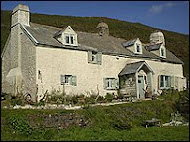
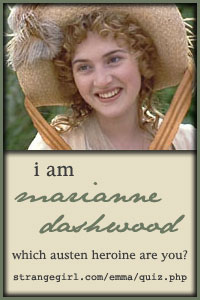










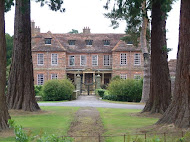
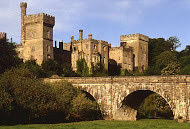
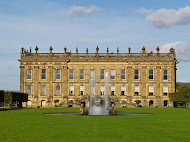
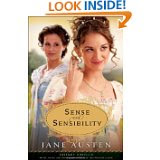
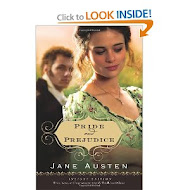

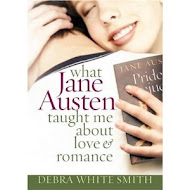

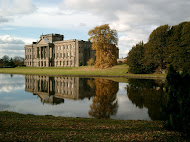
I love this essay :)
ReplyDelete